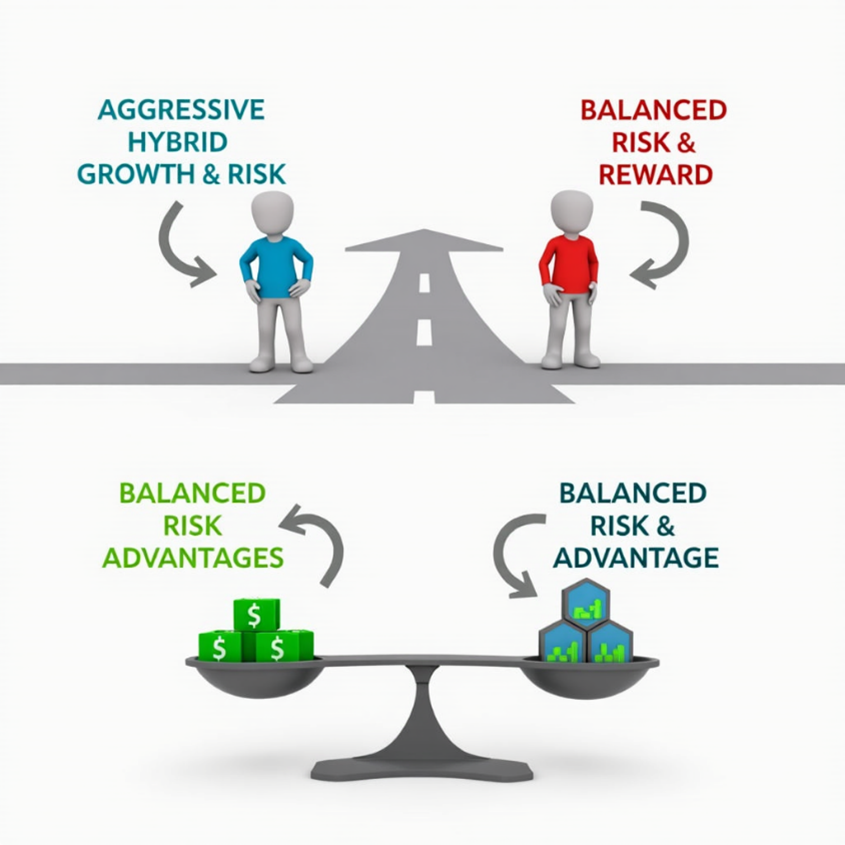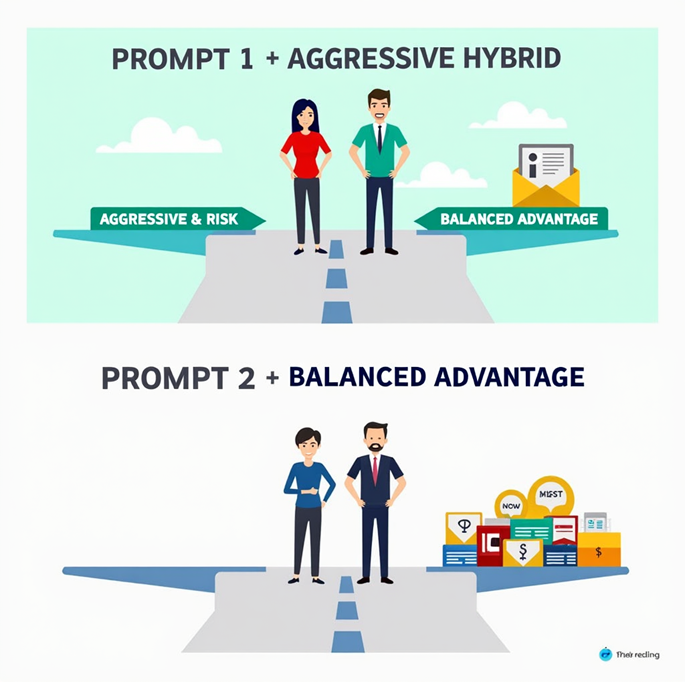There are no items in your cart
Add More
Add More
| Item Details | Price | ||
|---|---|---|---|
Confused between Aggressive Hybrid and Balanced Advantage Funds? Here’s a simple comparison to help you choose the right hybrid fund based on your goals and risk appetite.
03/06/2025
Hybrid funds combine equity and debt — giving you the best of both worlds. But not all hybrid funds are created equal. Two popular types are:

SEBI Definitions & Key Differences 🔥 Aggressive Hybrid Fund
Who Should Choose What?
| Need | Choose This Fund |
| Maximize long-term wealth | Aggressive Hybrid |
| Protect downside in market dips | Balanced Advantage Fund |
| SIP for retirement or child’s goal | Either (based on risk level) |
🧭 Know your goals → match the fund
📉 Don’t chase only returns → consider volatility
💬 Talk to an advisor before choosing
Summary Table: Aggressive Hybrid vs BAF
| Fund Type | Avg Return (5-Yr CAGR) | Avg Risk | Avg Investor Behaviour |
| Aggressive Hybrid | 11% – 13% | Medium to High | Younger investors, return-focused |
| Balanced Advantage | 10% – 12% | Low to Medium | Cautious investors, SIP consistent |

Dr.Satish Vadapalli
Research Analyst